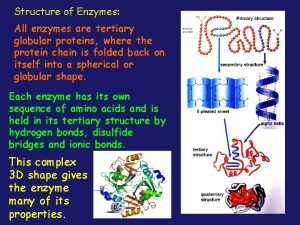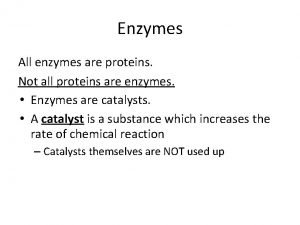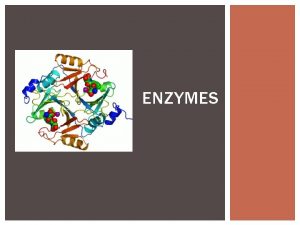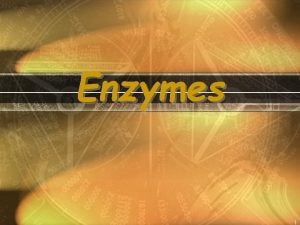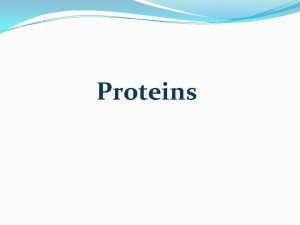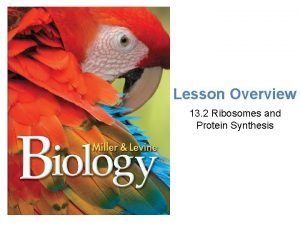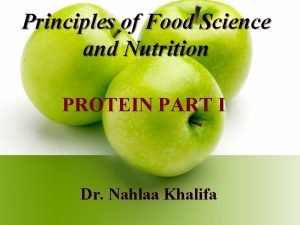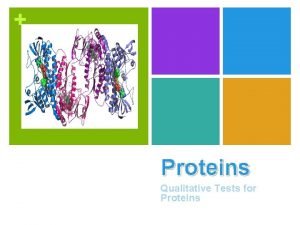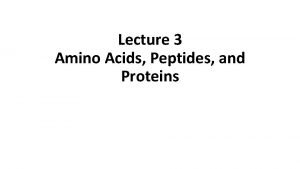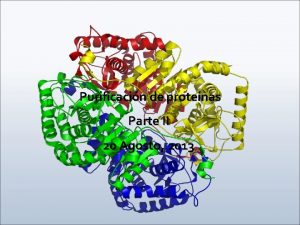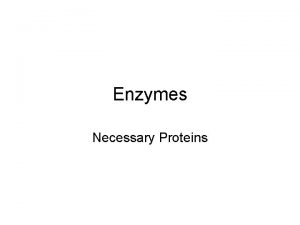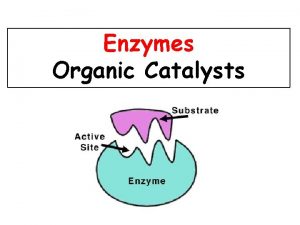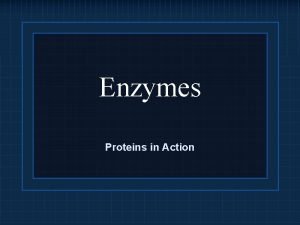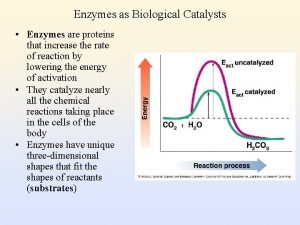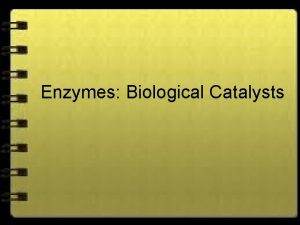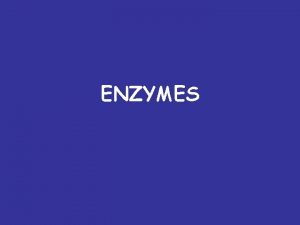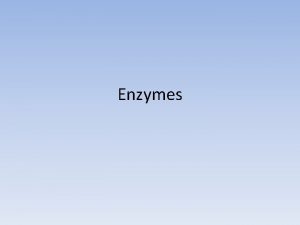Enzymes as catalysts Most enzymes are proteins Catalystchanges











- Slides: 11

Enzymes as catalysts • Most enzymes are proteins • Catalyst=changes the rate of the reaction but is not consumed (used up) by the reaction • Enzymes lower the activation energy of the reaction (activation energy or free energy of activation is usually in the form of heat and is required to make the molecules interact or break) • Enzymes are specific to their substrate (reactant) because the shape of the active site (only region of enzyme that binds to substrate) conforms to the shape of the substrate (induced fit) • Like a clasping handshake or lock & key

Figure 8. 13 Free energy Course of reaction without enzyme EA with enzyme is lower Reactants G is unaffected by enzyme Course of reaction with enzyme Products Progress of the reaction

Figure 8. 15 -3 1 Substrates enter active site. 2 Substrates are held in active site by weak interactions. Substrates Enzyme-substrate complex 3 Active site can lower EA and speed up a reaction. 6 Active site is available for two new substrate molecules. Enzyme 5 Products are released. 4 Substrates are converted to products. Products

Enzyme controls • Denaturation due to p. H or temperature changes • Cofactors=non-protein attachments to the enzyme’s active site that help maintain it’s shape • Ex: vitamins

Enzyme Controls cont’d • Inhibition • Competitive=mimics the substrate and blocks the active site • Non-competitive inhibition=binds to another section on the enzyme, causing the shape of the active site to change • Ex: toxins & poisons • Allosteric regulation=noncompetitive inhibition is a type of allosteric regulation. • either causes activation by stabilizing the enzyme shape, or can cause inhibition by destabilizing the enzyme shape (usually at the junction of the polypeptide chains of the enzyme) • Cooperativity=enzymes can have multiple active sites, so induced fit at one active site may cause stabilization of other active sites on the enzyme

Figure 8. 17 (a) Normal binding (b) Competitive inhibition Substrate Active site (c) Noncompetitive inhibition Competitive inhibitor Enzyme Noncompetitive inhibitor

Figure 8. 19 (b) Cooperativity: another type of allosteric activation (a) Allosteric activators and inhibitors Allosteric enzyme with four subunits Regulatory site (one of four) Active site (one of four) Substrate Activator Stabilized active form Active form Oscillation Nonfunctional active site Inactive form Inhibitor Stabilized inactive form Inactive form Stabilized active form

Metabolic pathways and enzymes • Series of chemical reactions in which the products of each step are reactants for the next step • Feedback inhibition of enzymes occurs when the end product of a pathway acts as an enzyme inhibitor

Figure 8. 21 Active site available Isoleucine used up by cell Active site of Feedback enzyme 1 is inhibition no longer able to catalyze the conversion of threonine to intermediate A; pathway is switched off. Isoleucine binds to allosteric site. Initial substrate (threonine) Threonine in active site Enzyme 1 (threonine deaminase) Intermediate A Enzyme 2 Intermediate B Enzyme 3 Intermediate C Enzyme 4 Intermediate D Enzyme 5 End product (isoleucine)

Enzyme and Catalase Articles • Read the articles at your table. • Discuss what you read with your tablemates. • 10 minutes • Questions: 1. Define metabolism and relate the term to enzymes and enzyme activity. 2. What enzyme breaks down fats? 3. What family of biochemical does catalase belong to? 4. What is the substrate for the enzyme catalase? 5. Why is catalase important in the human body? Is it also important to plants? Explain why or why not. 6. How is catalase used in the food industry and cosmetology

 Insidan region jh
Insidan region jh Relational escalation catalysts
Relational escalation catalysts All enzymes are globular proteins
All enzymes are globular proteins Not all enzymes are proteins
Not all enzymes are proteins Most enzymes are *
Most enzymes are * Most enzymes are
Most enzymes are Characteristics of protiens
Characteristics of protiens What role does the ribosome play in assembling proteins?
What role does the ribosome play in assembling proteins? Complementary proteins
Complementary proteins Qualitative test for proteins
Qualitative test for proteins Peptide synthesis
Peptide synthesis Amphoteric proteins
Amphoteric proteins


